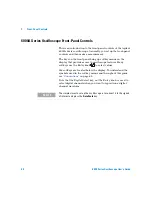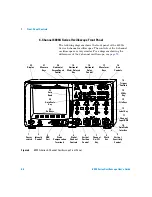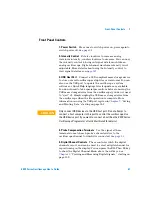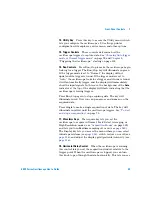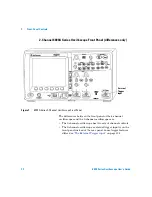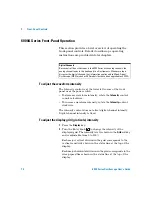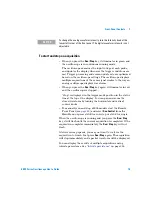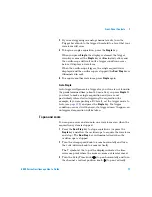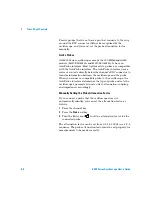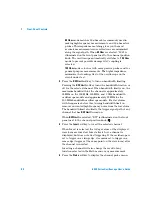
76
6000 Series Oscilloscope User’s Guide
2
Front-Panel Controls
To make a single acquisition
When you press the
Single
key it illuminates in yellow and the
oscilloscope starts the acquisition system, searching for the
trigger condition. When the trigger condition is met, the
captured waveform is displayed, the
Single
key is extinguished
and the
Run/Stop
key illuminates in red.
•
Use the
Single
key to view single-shot events without
subsequent waveform data overwriting the display.
•
To manually make a single acquisition on 6000L models start
the Remote Front Panel (see
) and select
Run Control
from the Main Menu or press ctrl+S for single.
Use Single when you want the maximum sample rate and the
maximum memory depth for pan and zoom. (See
1
Set the trigger mode to Normal (see
on page 129 for instructions).
This keeps the oscilloscope from automatically triggering
immediately.
Memory Depth/Record Length
Run/Stop versus Single
When the oscilloscope is running, the trigger processing and update rate are
optimized over the memory depth.
Single
Single acquisitions always use the maximum memory available—at least twice as
much memory as acquisitions captured in Run mode—and the oscilloscope
stores at least twice as many samples. At slow sweep speeds, the oscilloscope
operates at a higher sample rate when Single is used to capture an acquisition
due to the increased memory available. To acquire data with the longest possible
record length, press the Single key.
Running
When running, versus taking a single acquisition, the memory is divided in half.
This allows the acquisition system to acquire one record while processing the
previous acquisition, dramatically improving the number of waveforms per second
processed by the oscilloscope. While running, maximizing the rate at which
waveforms are drawn on the display provides the best picture of your input signal.
Summary of Contents for InfiniiVision DSO6014L
Page 2: ...Agilent Technologies Agilent 6000 Series Oscilloscopes User s Guide...
Page 59: ...58 6000 Series Oscilloscope User s Guide 1 Getting Started...
Page 109: ...108 6000 Series Oscilloscope User s Guide 2 Front Panel Controls...
Page 125: ...124 6000 Series Oscilloscope User s Guide 3 Viewing and Measuring Digital Signals...
Page 251: ...250 6000 Series Oscilloscope User s Guide 5 Making Measurements...
Page 287: ...286 6000 Series Oscilloscope User s Guide 6 Displaying Data Interpreting Decoded LIN Data...
Page 321: ...320 6000 Series Oscilloscope User s Guide 7 Saving and Printing Data...
Page 370: ......



